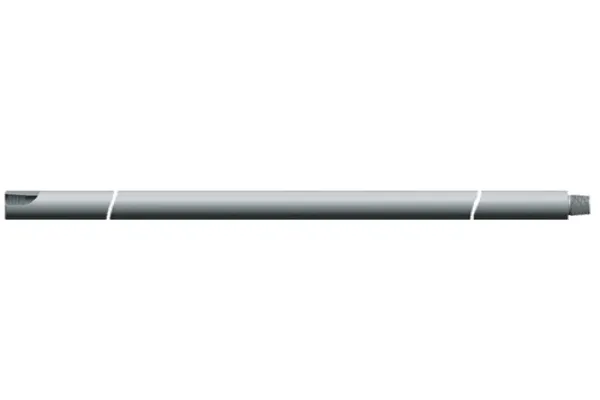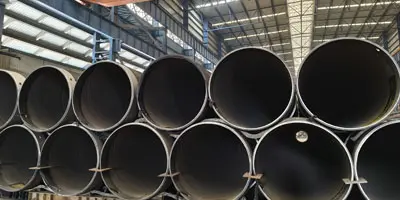The Usage Method of Non-Magnetic Drill Collars
Introduction
Non-magnetic drill collars (NMDCs) play a critical role in oil and gas drilling operations. These
drill collars are essential for reducing magnetic interference and ensuring accurate measurement data from downhole instruments. Made from low-carbon high-chromium manganese alloy steel, NMDCs undergo strict chemical composition control and forging processes to achieve superior mechanical properties.This article provides an in-depth guide on NMDCs, including their composition, structure, usage methods, and maintenance requirements.
Composition and Properties of Non-Magnetic Drill Collars
NMDCs are manufactured using N1310 low-carbon alloy steel, which undergoes precise chemical composition analysis and mechanical property testing. This ensures that the material meets the required hardness, toughness, impact resistance, and corrosion resistance standards.
Key properties of NMDCs include:
Low Magnetic Permeability: When the magnetic field strength is 1×10⁵/4π A/m, the relative magnetic permeability (μr) is ≤1.010.
Excellent Mechanical Strength: NMDCs possess high strength and wear resistance, allowing them to withstand harsh drilling conditions.
Corrosion Resistance: The alloy composition ensures superior resistance to intergranular corrosion cracking.
Magnetic Induction Gradient: The magnetic induction gradient along the inner hole at any 100mm distance is ≤0.05μT, ensuring minimal magnetic interference.
Types and Structure of Non-Magnetic Drill Collars
There are two main types of NMDCs used in drilling operations:
1. Integral Non-Magnetic Drill Collar
The entire collar is a smooth, thick-walled round tube with threaded connections at both ends.
It provides a stable connection within the Bottom Hole Assembly (BHA) and prevents deviation in directional drilling.
2. Spiral Non-Magnetic Drill Collar
Designed with three right-hand spiral grooves on the outer cylindrical surface.
These grooves reduce the contact area with the wellbore, minimizing differential sticking caused by pressure variations.
Both types serve the same primary function—providing weight on the bit (WOB) and ensuring accurate directional control during drilling.
Usage Methods of Non-Magnetic Drill Collars
To maximize the efficiency and lifespan of NMDCs, proper usage and handling procedures must be followed.
1. Installation and Operation
Positioning in the BHA: NMDCs are typically placed above measurement instruments to prevent magnetic interference from the drill string.
Thread Connection: Align the male and female thread ends properly, rotate slowly, and tighten securely to prevent loosening during drilling.
Downhole Operation: Control the descent speed to avoid damaging sensitive instruments inside the BHA.
Drilling Process Monitoring: Continuously monitor NMDCs for signs of wear, pressure fluctuations, or tool sticking. Adjust drilling parameters if necessary.
2. Length Selection for Measurement Accuracy
The length of an NMDC is a crucial factor in ensuring accurate measurements from downhole magnetic instruments. The selection should be based on:
Well Inclination Angle: In highly deviated or horizontal wells, longer NMDCs are required to minimize magnetic field distortion.
Wellbore Direction: For azimuthal measurements, NMDC length must be optimized to prevent interference from nearby metal structures.
Maintenance and Storage of Non-Magnetic Drill Collars
Proper maintenance ensures longer service life and better performance of NMDCs. Key precautions include:
1. Post-Use Cleaning and Inspection
After drilling, remove all mud, dirt, and drill cuttings from the NMDC surface.
Conduct a thorough safety check of threads, seals, and the collar body.
Apply anti-rust oil to prevent corrosion during storage.
2. On-Site Inspection and Repair
If any damage, excessive wear, or deformation is detected, the NMDC must be sent for repair or scrapped.
Magnetic interference tests should be conducted periodically to verify low permeability performance.
3. Proper Storage Conditions
Store NMDCs in a dry and ventilated area to prevent moisture-related corrosion.
Separate storage from magnetic drill string components to maintain low magnetic permeability.

Conclusion
Non-magnetic drill collars are essential for precise directional drilling and accurate wellbore measurements. Their low magnetic permeability, high-strength properties, and corrosion resistance make them indispensable in modern
drilling operations.
By following proper usage methods, ensuring correct length selection, and maintaining strict inspection and storage protocols, drilling teams can maximize the efficiency and lifespan of NMDCs while ensuring reliable performance in the field.






 English
English Español
Español بالعربية
بالعربية











 Phone :
Phone :  Whatsapp :
Whatsapp :  Email :
Email : 


